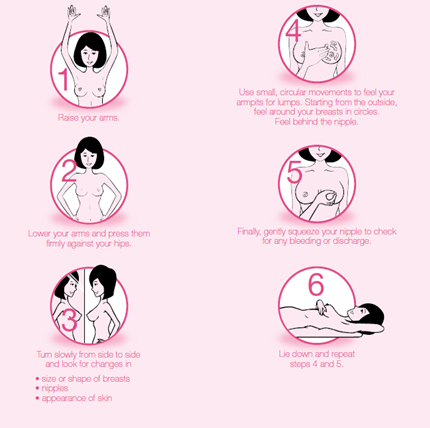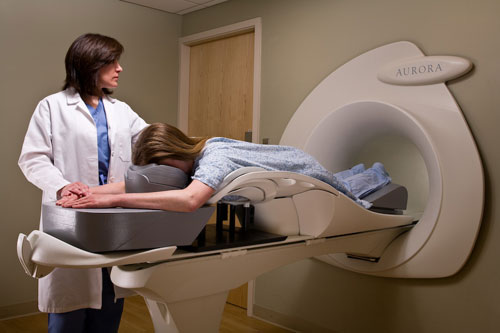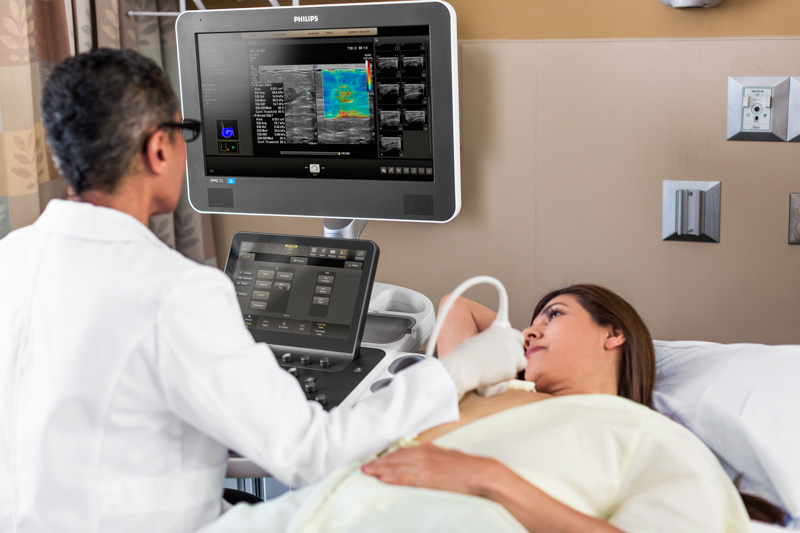
Breast cancer is sometimes found after symptoms appear, but many women with breast cancer have no symptoms. This is why regular breast cancer screening is so important. Learn more.
Self-Exams
It’s a good idea to know how your breasts normally look and feel so you can notice any changes. India Turns Pink recommendations for Breast Self – Exams regularly.

Mammograms
A mammogram can show breast lumps up to 2 years before they can be felt. Different tests help determine if a lump may be cancer. Ones that aren’t cancerous tend to have different physical features than ones that are. Imaging tests such as mammograms and ultrasounds can often see the difference.
When and if you need these imaging tests is a personal decision between you and your doctor. Most women don’t start having mammograms until they’re at least 40. If you’re at higher risk for breast cancer, your doctor may want you to start at a younger age.

Breast MRI
This test combines several images of your breast into one to create a detailed picture. It’s more often used after you’re diagnosed to see how far cancer has spread, but your doctor might combine it with a mammogram as a screening test if:
– You’re at a high risk for breast cancer.
You have a family history of breast or ovarian cancer.
– Your breasts are dense (there are a lot of ducts, glands, and fibrous tissue but little fat) and mammograms didn’t find a previous breast cancer.
– You have dense breasts, a strong family history of breast cancer, and you’ve had precancerous breast changes like atypical hyperplasia or lobular carcinoma in situ.
– You have the BRCA1 or BRCA2 gene mutation.
– You had radiation treatments to your chest area before you were 30.

Breast Ultrasound
Your doctor is most likely to use this if you have dense breasts. It’s also an option if you’re at high risk for breast cancer and you can’t have an MRI or if you’re pregnant, so you aren’t exposed to X-rays from a mammogram.

Screening Recommendations
For women at average risk, the American Cancer Society recommends that women ages:
– 45 to 54: Get yearly mammograms.
– 55 and older: Can switch to getting a mammogram every other year or continue getting yearly mammograms.
– 40 to 44: It’s OK to start a yearly mammogram.
India Turns Pink recommends screening mammograms every other year for women ages 50-74. The decision to get a mammogram every other year from age 40 to 49 is up to you and your doctor.
How Do Doctors Diagnose Breast Cancer?
The only way to confirm cancer is for a doctor to do a needle aspiration or surgical breast biopsy to collect and test tissue for cancer cells.
If It’s Cancer
If you’re diagnosed with breast cancer, you and your doctor will need to know what type it is and how advanced it is. A check of your lymph nodes can tell if the disease has spread. Other tests give an idea of what treatments may work best for you, and still others predict the likelihood that your cancer will come back after treatment.
Your doctor can help you understand all of these tests, and together you’ll decide on the best treatment plan for you.

Journey towards Breast Cancer Free India 2030
Who we are Leadership
Financial
Career
Your Community
About Breast Cancer
Risk Factor
Screening
Treatment
Share your story
Blog
Latest News
Awareness
Phone: +91 98408 49772
Email: President@indiaturnspink.org
CSR Project: www.itpioclsewa.org
Airports Activities: www.indiaturnspink.org
Who we are Leadership
Financial
Career
Your community
About Breast Cancer
Risk Factor
Screening
Treatment
Share your story
Blog
Latest News
Awareness
Phone: +91 98408 49772
Email: President@indiaturnspink.org
CSR Project: www.itpioclsewa.org
Airports Activities: www.indiaturnspink.org
© 2025 India turns pink
Designed & Develop by Myminz.in